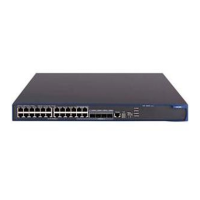1-3
Figure 1-2 Subnet a Class B network
In the absence of subnetting, some special addresses such as the addresses with the net ID of all zeros
and the addresses with the host ID of all ones, are not assignable to hosts. The same is true for
subnetting. When designing your network, you should note that subnetting is somewhat a tradeoff
between subnets and accommodated hosts. For example, a Class B network can accommodate 65,534
(2
16
– 2. Of the two deducted Class B addresses, one with an all-ones host ID is the broadcast address
and the other with an all-zero host ID is the network address) hosts before being subnetted. After you
break it down into 512 (2
9
) subnets by using the first 9 bits of the host ID for the subnet, you have only 7
bits for the host ID and thus have only 126 (2
7
– 2) hosts in each subnet. The maximum number of hosts
is thus 64,512 (512 × 126), 1022 less after the network is subnetted.
Class A, B, and C networks, before being subnetted, use these default masks (also called natural
masks): 255.0.0.0, 255.255.0.0, and 255.255.255.0 respectively.
Protocols and Standards
z RFC 1366, Guidelines for Management of IP Address Space
z RFC 1367, Schedule for IP Address Space Management Guidelines
Configuring IP Addresses
S5100 Series Ethernet Switches support assigning IP addresses to loopback interfaces and VLAN
interfaces.
A loopback interface is a virtual interface. The physical layer state and link layer protocols of a loopback
interface are always up unless the loopback interface is manually shut down. A loopback interface can
be configured with an IP address, so routing protocols can be enabled on a loopback interface, and a
loopback interface is capable of sending and receiving routing protocol packets.
Each VLAN needs an IP address so that it can be addressed. For more information about VLAN
interfaces, refer to VLAN Operation in this manual.
Besides directly assigning an IP address to a VLAN interface, you may configure a VLAN interface to
obtain an IP address through BOOTP or DHCP as alternatives. If you change the way an interface
obtains an IP address, from manual assignment to BOOTP for example, the IP address obtained from
BOOTP will overwrite the old one manually assigned.
This chapter only covers how to assign an IP address manually. For the other two approaches, refer to
the part discussing DHCP.

